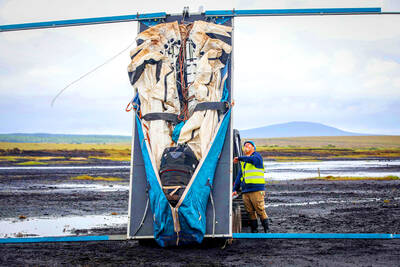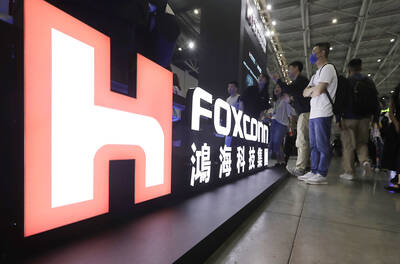Cellphone sales in China, the world’s No. 1 handset market, grew the slowest in four years as consumers gave to relief efforts for the country’s deadliest earthquake in 32 years, JPMorgan Chase & Co said.
Sales gained 8.7 percent last month from a year earlier, the slowest rate since 2004 and less than half the 18.4 percent increase recorded for the first four months of this year, JPMorgan analyst Charles Guo wrote in a report to clients on Thursday. The impact of the 7.9-magnitude quake that hit Sichuan May 12, killing almost 70,000 people, could continue to hurt sales into next month, he wrote.
Flooding in southern China this month, where some regions have been hit by the most rain in 100 years, and a government crackdown on smuggled and counterfeit handsets have also affected sales, Hong Kong-based Guo wrote. Demand may not recover until after the Olympics, the report said.
China is home to more mobile-phone users than the combined populations of the US, Japan and the UK, data showed. Nokia Oyj was the country’s No. 1 brand of phones with a 35 percent share of the market at the end of last year, followed by Samsung Electronics Co’s 13 percent and Motorola Inc’s 12 percent, Beijing-based researcher Analysys International said.
Separately, Nokia may have lost market share to Samsung as the Suwon, South Korea-based company “continues its aggressive market-share assault on the low-end segment,” Guo wrote.

A proposed 100 percent tariff on chip imports announced by US President Donald Trump could shift more of Taiwan’s semiconductor production overseas, a Taiwan Institute of Economic Research (TIER) researcher said yesterday. Trump’s tariff policy will accelerate the global semiconductor industry’s pace to establish roots in the US, leading to higher supply chain costs and ultimately raising prices of consumer electronics and creating uncertainty for future market demand, Arisa Liu (劉佩真) at the institute’s Taiwan Industry Economics Database said in a telephone interview. Trump’s move signals his intention to "restore the glory of the US semiconductor industry," Liu noted, saying that

On Ireland’s blustery western seaboard, researchers are gleefully flying giant kites — not for fun, but in the hope of generating renewable electricity and sparking a “revolution” in wind energy. “We use a kite to capture the wind and a generator at the bottom of it that captures the power,” said Padraic Doherty of Kitepower, the Dutch firm behind the venture. At its test site in operation since September 2023 near the small town of Bangor Erris, the team transports the vast 60-square-meter kite from a hangar across the lunar-like bogland to a generator. The kite is then attached by a

Foxconn Technology Co (鴻準精密), a metal casing supplier owned by Hon Hai Precision Industry Co (鴻海精密), yesterday announced plans to invest US$1 billion in the US over the next decade as part of its business transformation strategy. The Apple Inc supplier said in a statement that its board approved the investment on Thursday, as part of a transformation strategy focused on precision mold development, smart manufacturing, robotics and advanced automation. The strategy would have a strong emphasis on artificial intelligence (AI), the company added. The company said it aims to build a flexible, intelligent production ecosystem to boost competitiveness and sustainability. Foxconn

STILL UNCLEAR: Several aspects of the policy still need to be clarified, such as whether the exemptions would expand to related products, PwC Taiwan warned The TAIEX surged yesterday, led by gains in Taiwan Semiconductor Manufacturing Co (TSMC, 台積電), after US President Donald Trump announced a sweeping 100 percent tariff on imported semiconductors — while exempting companies operating or building plants in the US, which includes TSMC. The benchmark index jumped 556.41 points, or 2.37 percent, to close at 24,003.77, breaching the 24,000-point level and hitting its highest close this year, Taiwan Stock Exchange (TWSE) data showed. TSMC rose NT$55, or 4.89 percent, to close at a record NT$1,180, as the company is already investing heavily in a multibillion-dollar plant in Arizona that led investors to assume